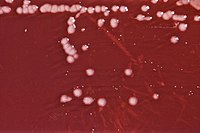
Methodological approaches for monitoring opportunistic pathogens in premise plumbing: A review.
Sign Up to like & getrecommendations! Published in 2017 at "Water research"
DOI: 10.1016/j.watres.2017.03.046
Abstract: Opportunistic premise (i.e., building) plumbing pathogens (OPPPs, e.g., Legionella pneumophila, Mycobacterium avium complex, Pseudomonas aeruginosa, Acanthamoeba, and Naegleria fowleri) are a significant and growing source of disease. Because OPPPs establish and grow as part of… read more here.
Keywords: water; opportunistic pathogens; methodological approaches; review ... See more keywords

Metaphylogenetic analysis of global sewage reveals that bacterial strains associated with human disease show less degree of geographic clustering
Sign Up to like & getrecommendations! Published in 2020 at "Scientific Reports"
DOI: 10.1038/s41598-020-59292-w
Abstract: Knowledge about the difference in the global distribution of pathogens and non-pathogens is limited. Here, we investigate it using a multi-sample metagenomics phylogeny approach based on short-read metagenomic sequencing of sewage from 79 sites around… read more here.
Keywords: global sewage; opportunistic pathogens; sewage reveals; metaphylogenetic analysis ... See more keywords

Opportunistic Pathogens in Cystic Fibrosis: Epidemiology and Pathogenesis of Lung Infection.
Sign Up to like & getrecommendations! Published in 2022 at "Journal of the Pediatric Infectious Diseases Society"
DOI: 10.1093/jpids/piac052
Abstract: Cystic fibrosis (CF) is one of the most common life-shortening genetic diseases in Caucasians. Due to abnormal accumulation of mucus, respiratory failure caused by chronic infections is the leading cause of mortality in this patient… read more here.
Keywords: opportunistic pathogens; lung; pathogens cystic; epidemiology ... See more keywords

Smartphones as an Ecological Niche of Microorganisms: Microbial Activities, Assembly, and Opportunistic Pathogens
Sign Up to like & getrecommendations! Published in 2022 at "Microbiology Spectrum"
DOI: 10.1128/spectrum.01508-22
Abstract: Currently, people spend an average of 4.2 h per day on their smartphones. Due to the COVID-19 pandemic, this figure may still be increasing. ABSTRACT Smartphone usage and contact frequency are unprecedentedly high in this era,… read more here.
Keywords: microbiota; opportunistic pathogens; microscopy; smartphone ... See more keywords

Use of 16S rRNA gene sequencing for prediction of new opportunistic pathogens in chicken ileal and cecal microbiota.
Sign Up to like & getrecommendations! Published in 2019 at "Poultry science"
DOI: 10.3382/ps/pey594
Abstract: In this study, we addressed differences in the development of gut microbiota in 4 successive batches of commercially hatched broiler parent chickens. When planning this study, we expected to find a batch with compromised performance… read more here.
Keywords: microbiota; opportunistic pathogens; new opportunistic; 16s rrna ... See more keywords

Antibiotic and antifungal use in pediatric leukemia and lymphoma patients are associated with increasing opportunistic pathogens and decreasing bacteria responsible for activities that enhance colonic defense
Sign Up to like & getrecommendations! Published in 2022 at "Frontiers in Cellular and Infection Microbiology"
DOI: 10.3389/fcimb.2022.924707
Abstract: Due to decreased immunity, both antibiotics and antifungals are regularly used in pediatric hematologic-cancer patients as a means to prevent severe infections and febrile neutropenia. The general effect of antibiotics on the human gut microbiome… read more here.
Keywords: oncology; leukemia lymphoma; antifungal use; use ... See more keywords

The Clinical View on Streptococcus anginosus Group – Opportunistic Pathogens Coming Out of Hiding
Sign Up to like & getrecommendations! Published in 2022 at "Frontiers in Microbiology"
DOI: 10.3389/fmicb.2022.956677
Abstract: Three distinct streptococcal species: Streptococcus anginosus, Streptococcus intermedius, and Streptococcus constellatus, belonging to the Streptococcus anginosus group (SAG), also known as Streptococcus milleri group, have been attracting clinicians and microbiologists, not only as oral commensals… read more here.
Keywords: streptococcus anginosus; anginosus group; streptococcus; opportunistic pathogens ... See more keywords